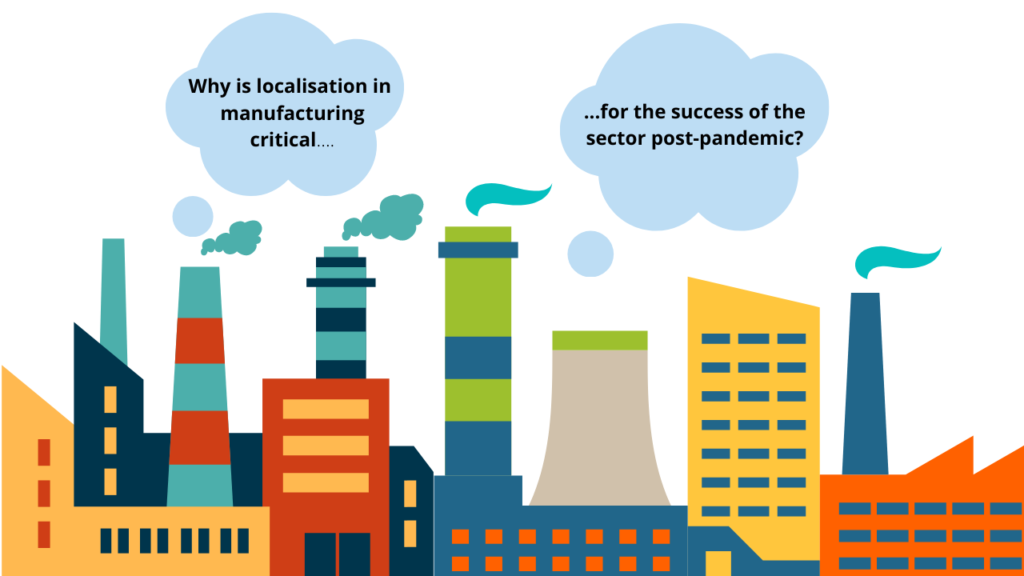Why is localisation in manufacturing critical for the success of the sector post-pandemic?

Post-pandemic, it is pretty much guaranteed that the world will not return to ‘normal’ as it was pre-pandemic. However, the silver lining is that the effects of the coronavirus have pushed the industry forward when it comes to innovation and finding new more sustainable ways of working. As industry leaders begin to prioritize how their business will operate after restrictions are lifted that was caused by the pandemic, how will localisation play a role in the success of the sector, and will looking more locally for suppliers become critical?
Many manufacturers have felt the effects of supply chain shortages over the course of the last year. This has forced manufacturers to address the agility, resilience and risk management processes of their business. Previously, the main focus for supply chain professionals was of course profitability and reducing cost – which has led to increased globalisation to source cheaper alternatives.
For manufacturers and businesses alike who rely heavily on international movement, supply chain shortage has made them consider the cost benefits of more local supply contacts. In an estimate made by Bain & Co in 2020, 60% of manufacturing business executives have very little grasp on the locations and relationships in their supply chain past their tier 1 suppliers.
There is no doubt that UK-based manufacturers have the capability to adapt their processes, take Interflex for example who usually produces parts for the automotive sector predominantly. Due to the sector recovering from the effects of the pandemic, Interflex saw an opportunity to utilise its staff’s skills by addressing the ppe shortage and therefore now produces face visors too.
Introducing a localisation strategy into manufacturing supply chains may allow business leaders to have tighter control of supplier standards and therefore leading to better products and higher levels of customer satisfaction.
Tipton-based manufacturing group ThreeWayPressings (TWP) is an aspiring example of introducing a localisation strategy. Managing Director of TWP Phil Stanley says that they are definitely feeling the benefits of working with local suppliers – since reshoring all of their business to within a 20-mile radius of their manufacturing plant.
“Since we have reshored work back to the UK, it has enabled us to have visibility and control over the entire production process. Rather than waiting for parts from the Far East, we have control over everything, saving us time and delivery costs. Another advantage is that it helps us become more environmentally sustainable as we know that the material is recycled and it hasn’t been brought over by large shipping companies,” Phil said.
Though localisation may not be as desirable as sourcing internationally when it comes to cost-saving, Phil believes that this could be a misconception. Phil added: “We managed to reshore work from China with a machine purchased from fellow Made in the Midlands member – Citizen machinery. When it comes to supply chains, cost varies in many ways, whilst saving on delivery costs we have also saved on no upfront costs allowing us to manage cash flow better.”
Since reshoring work from the Far East Phil reported that the business is around 50% up on revenue this year, saving around 20-25% on supply chain costs as components aren’t zipped off to another manufacturing subcontractor.
With the green agenda and the queen’s speech pointing out that the UK is committed to achieving net-zero greenhouse gas emissions by 2050, there is just one reason why a localisation strategy is paramount to the success of not only manufacturing but the planet. As we continue to see supply chain issues and material shortages, supporting local suppliers may just be the best way to keep manufacturing growing as we emerge from the pandemic.